| Fulfillment by (click here) |
Description | Price Estimate $ US |
|
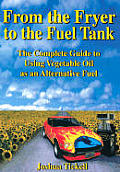 |
affiliate | From the Fryer to the Fuel Tank: The Complete Guide to Using Vegetable Oil as an Alternative Fuel
- Tickell As once rich oil fields run dry, researchers scramble to find solutions to the impending transportation crisis. But the fuel of the future may be hidden in places nobody thought to look. In From the Fryer to the Fuel Tank, expert Joshua Tickell unveils the problems with our fossil fuel economy and offers a surprisingly simple solution: cheap, clean-burning vegetable oil. From the Fryer to the Fuel Tank provides concise, easy to understand instructions for running a Diesel engine on vegetable oil. Packed with photos, graphs and diagrams, From the Fryer to the Fuel Tank contains all of the information you need to become independent of fossil fuels forever. |
$7 |
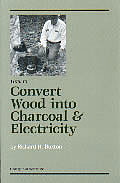 |
affiliate | How to Convert Wood into Charcoal and Electricity
- Buxton If you put wood into a pipe and heat it, gas, tar and water vapor will be driven off. You can pipe this gas around into the fire that is heating the pipe. When the whole unit cools, you can extract high grade charcoal. And we're talking about charcoal noticeably superior to the grocery store variety you use on your grill. If you route the generated gas through a series of primitive, low cost, easily made filters, you end up with a fuel that will power a lawn mower engine. You can use that engine to generate electricity with an alternator to charge batteries. In other words, you can make electricity from wood! Buxton will show you how it's done. He'll show you the unit he built from common brick, a piece of well casing, old plastic buckets, heater hose, an old Chevy truck radiator, silicone adhesive and so on. His main goal was to melt metal. He had built Stewart Marshall's cupola, but just didn't get the results he expected. He traced the problem down to the coke he was using. After he started using his homemade charcoal instead of coke, he started melting iron like crazy! You can do the same. The author lives in the Appalachians and has access to a lot of hardwood. You may want or need to consider making charcoal from hardwood scavenged from pallets. And last I heard, scrap pallets "grow" almost everywhere. Making charcoal is essential information for the foundryman. The homesteader and survivalists will find the idea of turning wood into electricity a valuable skill. You can generate gas from any old wood, not just hardwood, and in fact, I wonder if you could convert brush, leaves, maybe even grain to electricity. It's an idea to try. True, you're only generating small amounts of power, but it's enough to power lights, radios, refrigerators, etc like those used by campers. And if those dipstick terrorists disable the power grid in your part of the country for six weeks at a time, this machine might just save your sweet rear end! 63 pages, trade paper, Lindsay Publications |
$7 |
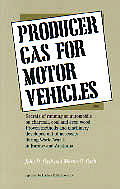 |
affiliate | Producer Gas for Motor Vehicles 1942
- Cash Here you get the secrets of powering an automobile on coal, coke, charcoal, and even wood using successful techniques developed in Australia and Europe. The preface reads: "The dangers which in 1940 threatened to cut off our petrol supplies, and thereby revived public interest in the gas producer have now passed the threatening stage and are in fact in operation. Lack of shipping space; lack of credits, the necessity of conserving our international balances, the entry of Japan into the war against us all combine to make the conservation of our petrol supplies a stern necessity. Gas producers are now to be seen everywhere supplying in the aggregate millions of miles of travel-service which would not otherwise be supplied. It may well be that the gas producer's greatest service to Australia is only just beginning..." These days gasoline supplies could be greatly reduced at any moment, not by a war with Japan, but by mid-Easterner's not being able to get along with themselves. We're far more dependent on Arab oil than most people realize. It could be the early 1970's all over again with gasoline shortages. Build an experimental gas generator and bolt it to an old car. Other people build race cars that move fast. When the oil shortage comes, your charcoal powered auto might be the only auto moving at all! Nuts and bolts how-to. Details you're not going to find anywhere else. A lot of rare information for the money. Get a book and shelve it, even if you don't build a generator. You'll have it when you want it. 196 pages. trade paper. Lindsay Publications |
$40 |
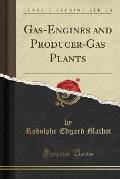 |
affiliate | Gas-Engines & Producer Gas Plants
(Classic Reprint) - Mathot Building a steam engine is tough. Finding a dynamo simpler. But I don't want to be around a homemade boiler. There's a good chance that it's a bomb waiting to go off. There's a simpler way. Instead of burning coal or wood to make steam in an external combustion engine, the smart thing to do is to convert the fuel to gas and send it into a commercial internal combustion engine driving an alternator. The system might be nothing more than a 5 hp Briggs & Stratton engine and a truck alternator charging 12 volt batteries. No boiler to build. No engine to build. No gasoline to buy. Just build a simple cooker and fire it up. This is was done in 1905 when Mathot showed people how to use those new "high-tech" one lung engines, powering them with gas generated by cooking wood and coal. Chapters include selection of an engine, installation, foundation and exhaust, water circulation, lubrication, perfect operation, how to start the engine, perturbations in the operation, producer gas engine, producer gas, pressure gas-producers, suction gas-producers, oil and volatile hydrocarbon engines, and selection of an engine. The beauty of this book is in details provided for many different gas generators. You get drawings of a Simplex generator, a Dowson unit, a Fichet-Heurtey producer with rotating bed-plate, a Gardie unit, a sawdust purifier, a gas holder and washer, a Fange-Chavanon inverted-combustion producer and many, many more. You'll find more about gas production here than in a dozen other books. This is not only valuable material to the homesteader and survivalist, but especially to the guy who wants to run his auto on coal and wood. Scaled down versions of these digesters were used all over the world during WWII and the years following due to petroleum shortages. And antique engine fans will find interesting details on early engines, ignitions systems, and more. No promises, but it may be that details here could help you run an engine on methane generated by rotting manure and organic material in a digester. Great, raw, rare energy information from a simpler time begging to be adapted to today's world. We've been consuming oil faster than we've been finding it for many years now. Shortages are on the way. This might be a way around the problem. Interesting stuff. 314 pages, trade paper, Lindsay Publications |
$16 |
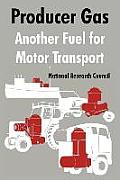 |
affiliate | Producer Gas: Another Fuel for Motor Transport
- National Research Council Producer gas is generated from solid fuels such as wood, charcoal, coal, peat, and agricultural residues. Although it has been used to power internal combustion engines since their invention, it has been largely overlooked for the past 50 years. During the early 1940s, when petroleum supplies for civilian use ran out in Europe, Asia, and Australia, producer gas was responsible for putting trucks, buses, taxis, tractors and other vehicles back on the roads, and boats back on the rivers. In 1939 Europe operated about 9,000 gas producer buses and trucks, and there were almost none on any other continent. By 1941, however, about 450,000 vehicles were in operation in all parts of the world, and by 1942 the number had grown to approximately 920,000. Gas producers were then in use not only in land vehicles, but also in boats, barges, and stationary engines. By 1946 more than a million motorized devices around the world operated on producer gas. In Europe and Asia alone, the use of producer gas in the 1940s contributed to saving millions of people from starvation. Basically, producer gas is made when a thin stream of air passes through a bed of glowing coals. The coals may come from the burning of wood, charcoal, coke, coal, peat, or from wastes such as corn cobs, peanut shells, sawdust, bagasse, and paper. (In some cases these materials must be pressed into bricks or pellets before they will produce adequate coals, and special generators may also be needed.) trade paper, 112 pages, University Press of the Pacific |
$33 |